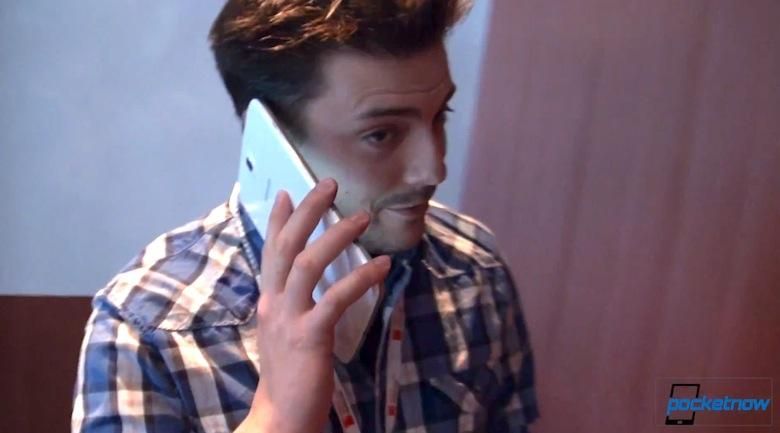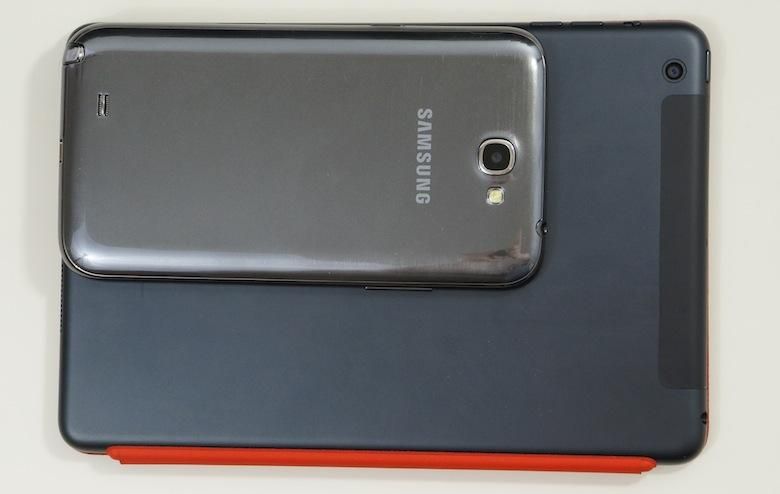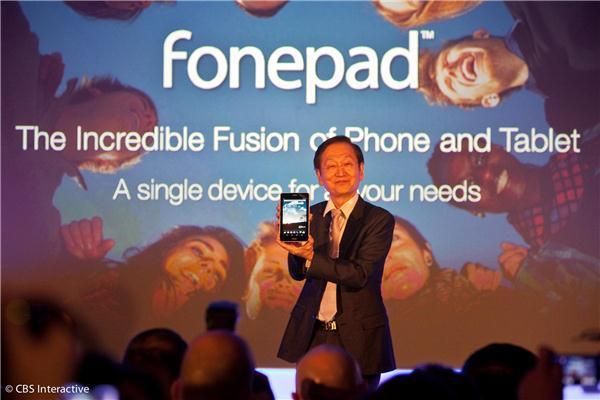Once considered a niche device that held no true purpose, the tablet has beat all odds to become a thriving, mainstream product. It has come to be a choice item in many people's mobile arsenal, a common household item for many. For me, the tablet has become a staple in my workflow.
Such is the case for many of the people I know – colleagues, friends, family and strangers. I can't go to the local coffee shop without seeing at least a couple people plop their iPad on the table. And just about all hours of the day, I have my iPad mini propped up, waiting to notify me of any incoming messages or notifications. I rarely leave my apartment without a tablet in tow, if not a few tabs.
The same could be said for a device that has slowly gained more and more traction over the last two years: the phablet. It's the middle ground that straddles the ever-shrinking line between phone and tablet. It, too, was once considered to be a niche category, yet the Galaxy Note II has come to be one of the most renowned smartphones of today. And more and more manufacturers are jumping on the phablet bandwagon.
Manufacturers are determined to blur the line between tablet and smartphone more than it already is.
The difference in size between a large smartphone and a small tablet is substantial.
Despite being so similar in nature, there is one core difference between smartphones and tablets that most sane people would probably agree with. Phones are great for answering calls. That's what they were originally intended to do, and they have held on to that capability quite well. Tablets? Not so much. That's not to say they can't answer calls. But even the smallest tablets are unwieldy, two-handed devices that were designed to be more PC-like for productivity, gaming and other multimedia consumption.
There's a reason carriers don't bill tablets the same as smartphones.
I remember poking fun at the first person I saw carrying around a Dell Streak. I joked with him about not having peripheral vision when he was on the phone and how he might as well just carry around a laptop instead of his cell phone. Little did any of us know that the Dell Streak would spark a revolution of phones made for giants.
It was unbelievably awkward to answer a call on the original Galaxy Note for the very first time. And it took weeks of answering calls for it to ever feel normal with the Galaxy Note II. It still feels strange answering calls on the Note II after switching back to a smaller phone for a while. And after a collective eight months with a phablet, I'm sure of one thing: the Galaxy Note II is the upper threshold for what should be considered any part phone.
But some manufacturers as simply itching to innovate and push boundaries, even if that means selling features to us that we may not want.
Over the weekend, Samsung made its much-anticipated 8-inch tablet, the Galaxy Note 8.0, official. Our own Anton Nagy and Michael Fisher got some hands-on time with the 8-inch slab in Barcelona at Mobile World Congress, and discovered a rather unique feature – for a tablet anyway. It comes with an earpiece speaker, just like your run-of-the-mill smartphone.
That's right. The Galaxy Note 8.0 doubles as a phone. Just answer a call and stick it up to your ear … and talk, just like you would with your smartphone.
This morning, ASUS announced Fonepad, the questionable fusion of phone and tablet.
And that's not all. Earlier this morning, ASUS pulled the exact same move with a similarly-formed tablet. The Fonepad. It features a slightly more respectably 7-inch display and an earpiece speaker so you can hold the still-too-large device to your head and make phone calls.
Surely this isn't going to become a thing. Right? Right?
Let me be clear. Using a tablet to replace a smartphone isn't a terrible idea. I bought an iPad mini to replace the iPhone 5 on my Verizon line for a couple reasons. One, I get to use more of what I pay for – I use a lot of data and hardly use any minutes. Two, I enjoy the extra display real estate. I use the tablet for everything I used the iPhone for, but with a lot more comfort. I use iMessage, Google Talk and Google Voice for text communication, and I use Skype and Google Voice for calling. So far, so good.
And answering calls from a tablet isn't so bad either. I do it in public regularly, yet no one around is gawking or pointing and laughing. There is a significant difference between how I answer calls from a tablet and how ASUS and Samsung are suggesting is an acceptable way to take a call. Of course, I can't just hold the iPad mini up to my ear to make a call. Unlike a smartphone, the Samsung Galaxy Note 8.0 or Fonepad, the iPad mini doesn't have an earpiece speaker. Even if it did, however, you would never catch me in a million years holding it up to my head to make a call. Instead, I use a wired headset with an in-line mic – simple, and it gets the job done without making me look absurd.
Let me repeat, I do not hold an 8-inch tablet up to my head to make calls. Nor would I, if I could.
People still poke fun at phablets for how large they are and how ridiculous it looks to talk on one, though it's quickly becoming the norm. Holding a device to your head that's bigger than your hand is one thing. Sure, it looks a little funny, but it's not so bad. Holding a device that is bigger than your head up to your ear is a whole different story.
There are just some things tablets weren't meant to be used for. Taking pictures with a tablet, for instance, is heinous. It looks idiotic. Making and answering calls with a tablet is perfectly fine; that's why wired and Bluetooth headsets exist. But I seriously hope people holding tablets up to their heads to make calls doesn't become an acceptable thing.
Image via CNET



